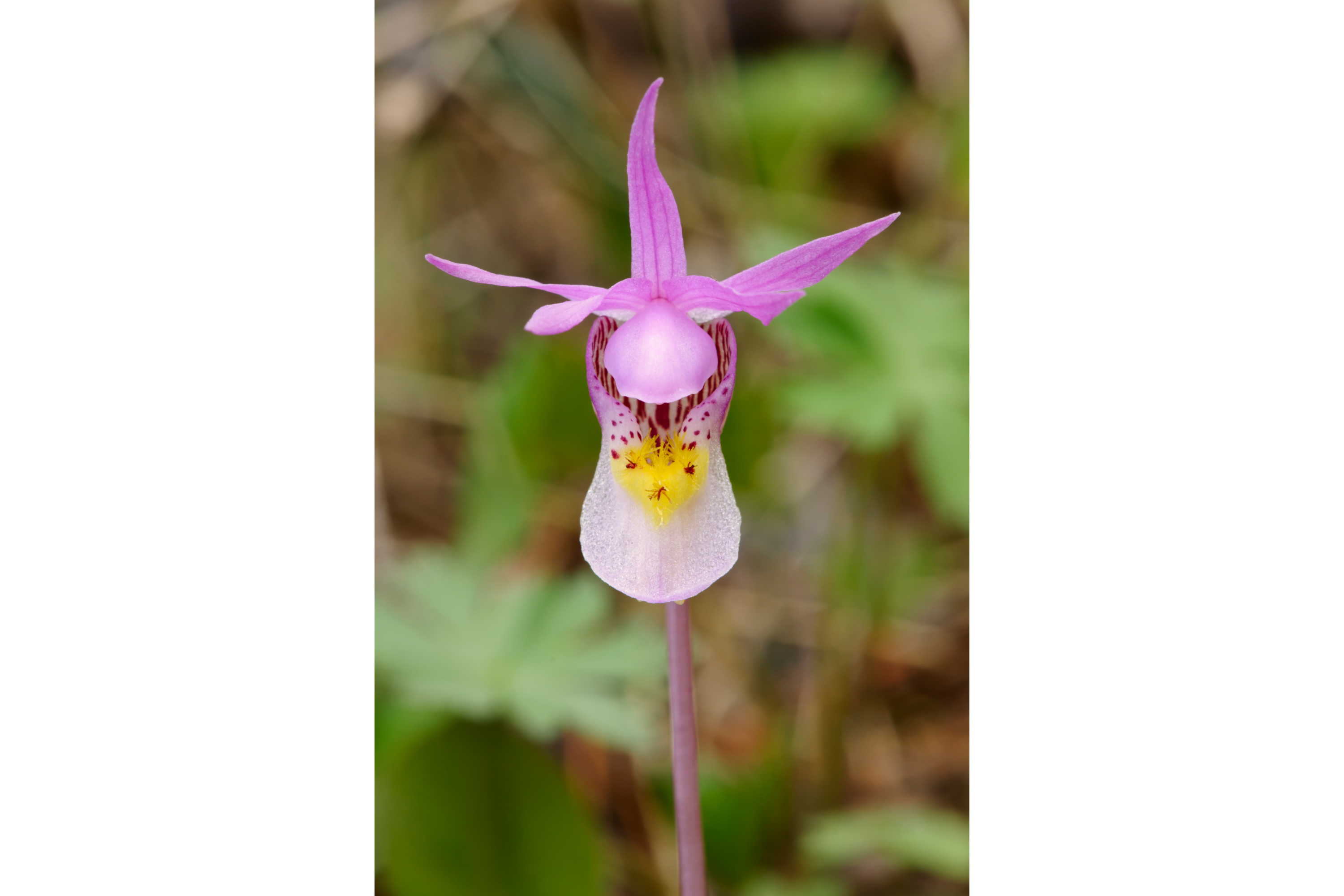Calypso orchid
(Calypso bulbosa)

Description
Calypso is a genus of orchids containing one species, Calypso bulbosa, known as the calypso orchid, fairy slipper or Venus's slipper. It is a perennial member of the orchid family found in undisturbed northern and montane forests. It has a small pink, purple, pinkish-purple, or red flower accented with a white lip, darker purple spottings, and yellow beard. The genus Calypso takes its name from the Greek signifying concealment, as they tend to favor sheltered areas on conifer forest floors. The specific epithet, bulbosa, refers to the bulb-like corms. Calypso bulbosa is a deciduous, perennial, herbaceous tuberous geophyte with a round, egg-shaped tuber as a perennial organ. It is encased in dead leaf sheaths and has elongated roots. Calypso orchids are typically 8 to 20 cm in height. At the bottom there is only a single leaf, which is stalked up to about 7 cm long. The leaves are whole eliptical lanceolate to egg-shaped blade is up to 6 cm long and up to 5 cm wide. Plant blooms with a purple-pink hermaphroditic, zygomorphic and threefold flower. The protruding petals and sepals are pink to purple in color, about 10 to 12 millimeters long and about 2 to 4 millimeters wide. The lip (labellum) is white to pink with pink or yellow spots. It has a wide, shoe-shaped cavity in the back and is about 15 to 25 millimeters long. A spur is absent. They do not bloom until May and June usually after snow melt. Each bulb lives no more than five years. The chromosomes count is 2n = 28. Since the orchid seed does not provide any nutrient tissue, germination only takes place when infected by a Mycorrhizal root fungus. This species' range is circumpolar, and includes California, the Rocky Mountain states and most of the most northerly states of the United States; most of Canada; Scandinavia much of European and Asiatic Russia; China, Mongolia, Korea and Japan see external links for map. It is found in subarctic swamps and marshes as well as shady places subarctic coniferous forests. Although the calypso orchid's distribution is wide, it is very susceptible to disturbance, and is therefore classified as threatened or endangered in several U. S. states and in Sweden and Finland. It does not transplant well owing to its mycorrhizal dependence on specific soil fungi. The corms have been used as a food source by North American native peoples. The Nlaka'pamux of British Columbia used it as a treatment for mild epilepsy.
Taxonomic tree:







